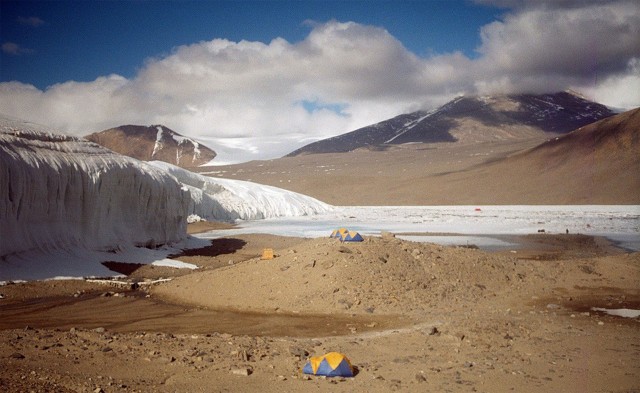Isolated patch of water, trapped under ice, sustains bacterial community
Ars Technica » Scientific Method 2012-11-26

Antarctica's McMurdo Dry Valleys may appear to be one of the least hospitable places on Earth. They contain a frigid desert where high winds scour the rocky ground, and the only water present is in the form of ice, some of it left over from when the ocean extended into the valley over a million years ago. The area is so inhospitable that NASA has used it to simulate conditions on Mars.
So biologists were probably very surprised to find that the area hosts a number of distinct ecosystems. Not on the surface; instead, these communities of bacteria live under the ice, in salty lakes that have been isolated from any external sources of energy or chemicals for anywhere from thousands to millions of years. Now, researchers have characterized one of the youngest under-ice lakes, which evidence suggests has been isolated from the air for only a few thousand years. Though estimates would suggest that the bacterial community within should be rapidly running out of food, the contents of the lake water suggest that the organisms are doing just fine, powered by the chemistry of the underlying minerals.
The most dramatic feature of the McMurdo Dry Valleys is probably Blood Falls, where iron both stains the ice red and helps power a community of bacteria that have been trapped within it for about 1.8 million years, ever since an arm of the ocean got cut off and frozen under a glacier. Lake Vida is in a different valley, and probably hasn't been isolated for nearly that long. It's extremely salty, and stays at a chilly -12°C under a sheet of ice that's at least 16m (52.8 feet) thick. But radiocarbon dating seems to indicate that it hasn't been isolated for nearly as long, and probably has exchanged carbon with the atmosphere within the last few thousand years.
Read 8 remaining paragraphs | Comments